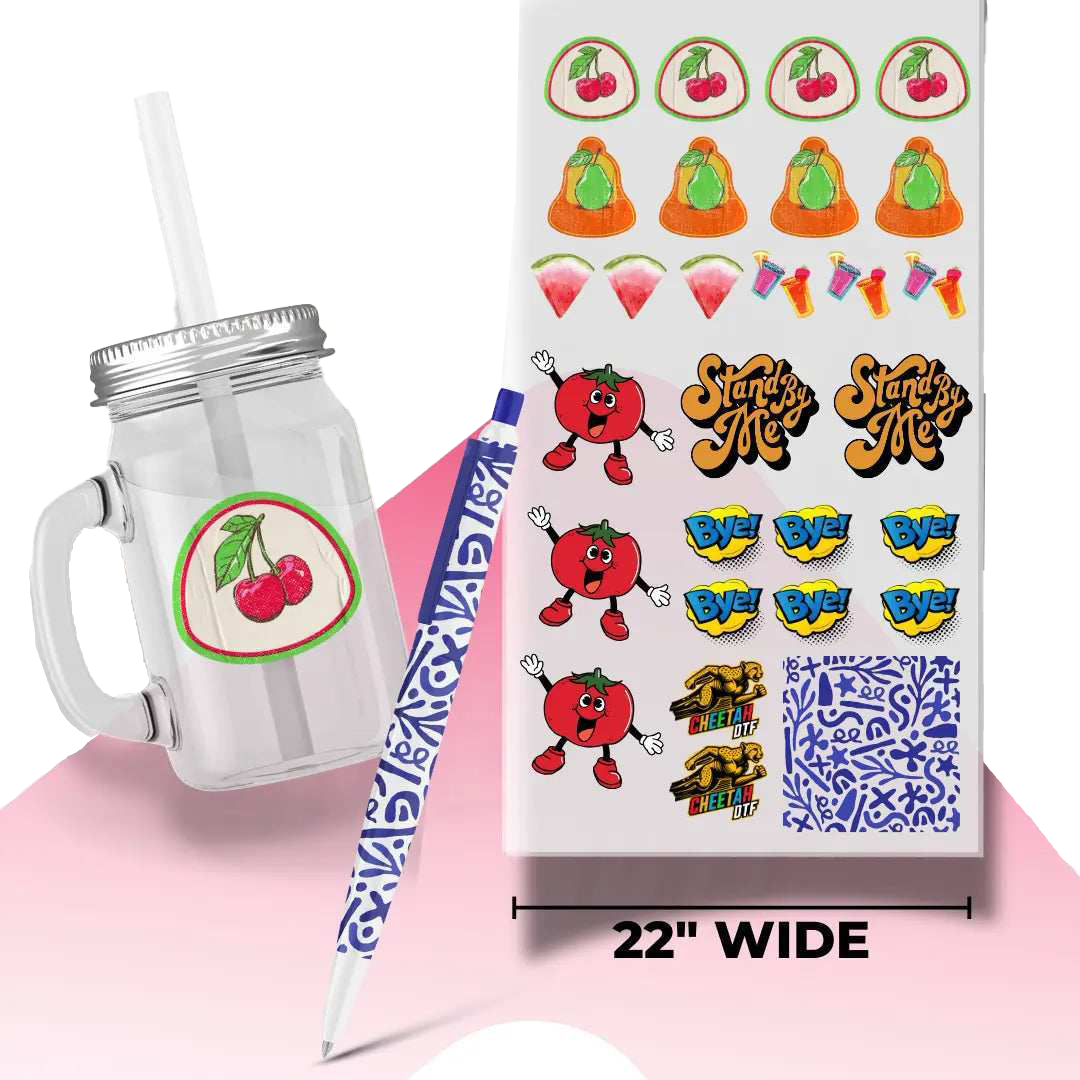DTF Prints Fading Too Fast? Avoid These 7 Common Mistakes
Do you often find yourself dealing with DTF fading, peeling, and cracking problems? These issues occur due to lack of proper maintenance or improper DTF printing techniques. To solve the “DTF prints fading” issue, it is important that you consider both aspects (print installation and its maintenance) to preserve the quality of your DTF transfers.
DTF fading usually happens because of simple mistakes in how it's made. Beginners often don't know that these little things can cause DTF print quality issues.
In this post, we’ll discuss seven of the most common errors that cause fading in DTF prints, along with what you can do to prevent them for durable results.
1. Using Low Quality Inks
Faded prints are often because of bad ink. Sure, cheap ink might save you a few bucks now, but it usually doesn't have enough color or the right stuff to stick around. Things might look bright at first, but with low-quality inks, the fade starts after a couple of washes.
The chemical makeup makes it impossible for the design to adhere strongly to the fabric or film, thereby exposing it to friction, water, and soap. Choosing premium DTF inks designed especially for long-lasting color and DTF wash resistance will help prevent DTF print fading.
2. Improper Heat Press Settings
Inappropriate heat press settings can negate all your efforts, even if you use superior-quality materials. Proper DTF print curing demands a specific temperature, pressure, and time. The print washes out if it is undercured since the ink does not completely adhere to the fabric or adhesive.
Too much heat or pressure, however, might damage or degrade the design and the ink. Many consumers, alas, believe all textiles or designs behave the same and thus do not test or fine-tune their heat press setup. To guarantee uniform results and prevent DTF print fading, appropriate calibration is vital. Your print's lifespan will greatly increase once your heat press is tuned.
3. Missing the Final Press
Skipping the last press, also known as the post-press, is a surprisingly often-made mistake. Your transfer isn't fully installed until you do the final press. In fact, it is because of the final press that your DTF print retains unmatched vibrancy. Without it the colors are not installed properly, which often leads to fading.
This step also affects DTF transfer durability. This extra step not only sets the hue but also streamlines the pattern, providing it a more gentle appearance and longer lifespan. Allowing this step a few extra seconds ensures your design will survive time and washing after washing. Although modest, this small work yields significant results.
4. Bad Film Quality
Not every PET film is made alike; the quality of your film has a major influence on determining whether your DTF prints peel or fade, or endure. Lower-grade films can have uneven coatings that cause patchy transfers or poor ink adhesion. This causes irregular prints that quickly disappear.
You may also notice areas where the ink fails to adhere or where the colors appear flat from the start. High-quality film guarantees that ink spreads evenly and transfers with precision and power. The right film will enhance your design and improve its durability in real-world applications.
5. Improper Drying or Curing
Proper curing or drying is an important part of the DTF printing process. Lack of drying can cause weak adhesion which can ultimately lead to weak prints that start to fade after a few washes.
This can be a bit confusing because most of the time, the prints look great even without proper curing. But they fade quickly with washing. The best way to make sure that the print is properly used is to monitor the temperature and drying time. Use specific settings as prescribed by your supplier and avoid guessing things. Proper curing technique can make or break your design.
6. Selecting the Wrong Materials
The fabric affects not only the feel of the item but also the durability of a DTF print. Some textiles, particularly those with great stretch or unique coatings, do not bond or absorb DTF glue well. Though at first the print seems durable, it might not hold up to many washes on the wrong material. Fabrics that are loosely woven, made of synthetic materials, or have special finishes can be tricky for getting things to stick.
Usually, you'll have better luck with tightly woven cotton or cotton-poly mixes because they give you a nice, even surface to work with. It's always a good idea to try out your prints on new fabrics before you make a ton of them. That way, you don't waste time and end up with a bunch of stuff that doesn't work. Doing this can really help make your DTF transfers last longer and keep your customers.
7. Inadequate Garment Care
Even the finest print will disappear if the clothing is not well-maintained. High dryer heat, rough detergents, bleach, and hot water will quickly degrade ink and adhesives. DTF fading is almost certain if consumers wash their printed clothing like standard laundry. This explains the need for post-sales education. You may help keep your print quality and lower the risk of complaints by offering DTF wash care tips like reversing the item, using cold water, and air drying. Including garment care into your consumer experience establishes brand trust in addition to safeguarding your goods. Helping customers understand the best way to wash DTF shirts goes a long way in reducing returns.
Choose Cheetah DTF for Quality Prints
DTF prints fading too quickly after a few washes? Don’t worry, a quality supplier like Cheetah DTF can ensure your prints last a long time. Cheetah DTF's meticulous design process eliminates common issues causing DTF print quality issues. Designed for intense pigmentation and maximum wash endurance, our high-performance inks deliver consistent results that last through multiple washes. The DTF maintenance guide we offer ensures you have the knowledge to keep your system running smoothly. From printing to transfer, every phase of the DTF process has been improved to ensure your prints last as long as your imagination does.
Final Thoughts
Every step you take toward quality control, from better ink and films to appropriate curing and fabric selection, enhances the longevity of your finished product. By steering clear of these seven frequent errors, you will not only increase print life but also raise your brand reputation and customer satisfaction. So how long do DTF prints last? With the right techniques and materials, a long time.
Ready to start printing? Try our DTF Sample Pack first to test the print quality. Cheetah DTF prints don't fade or peel after a few washes. Try our sample packs and judge for yourself.


